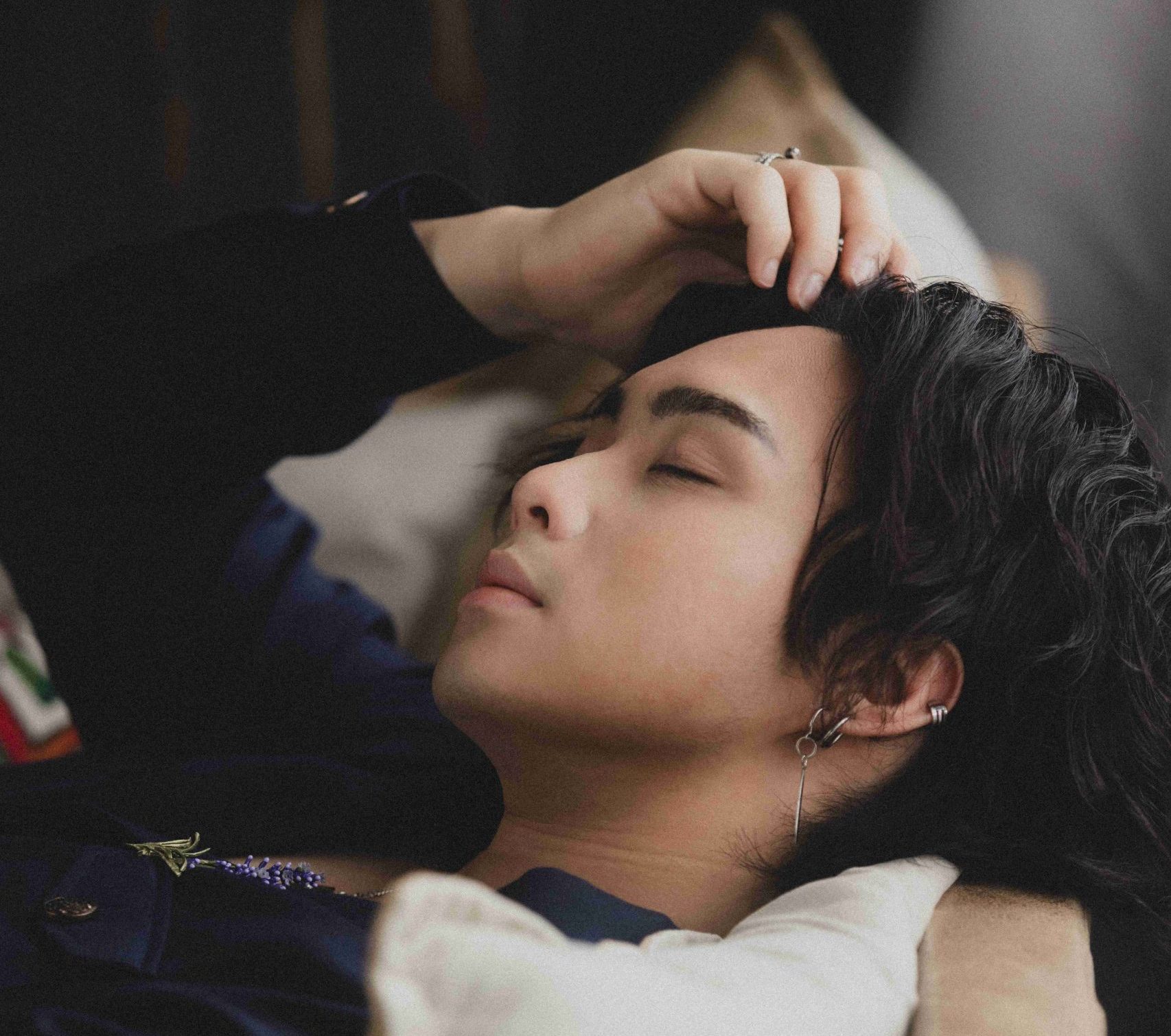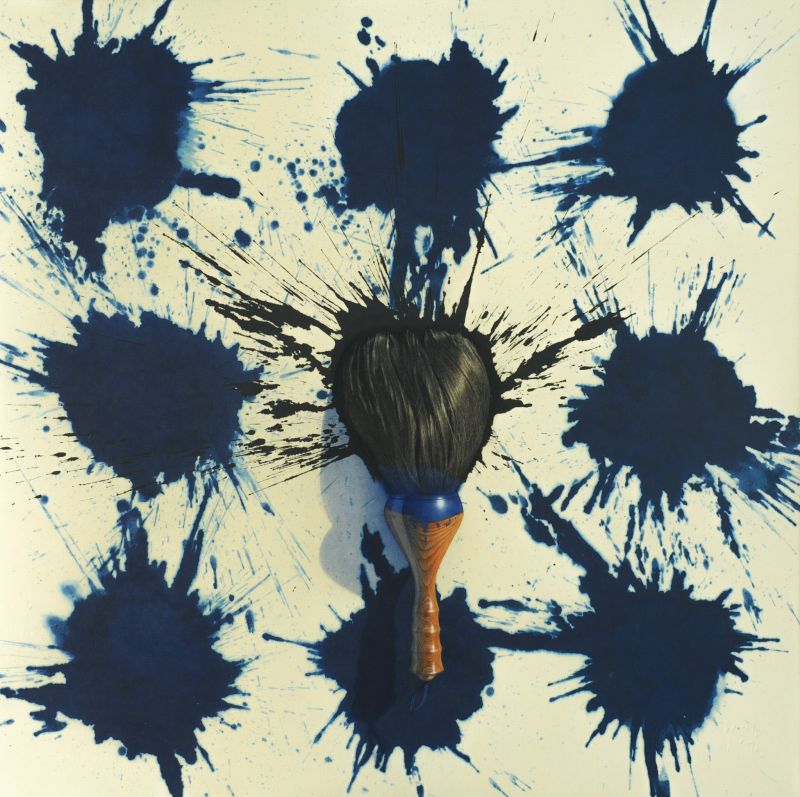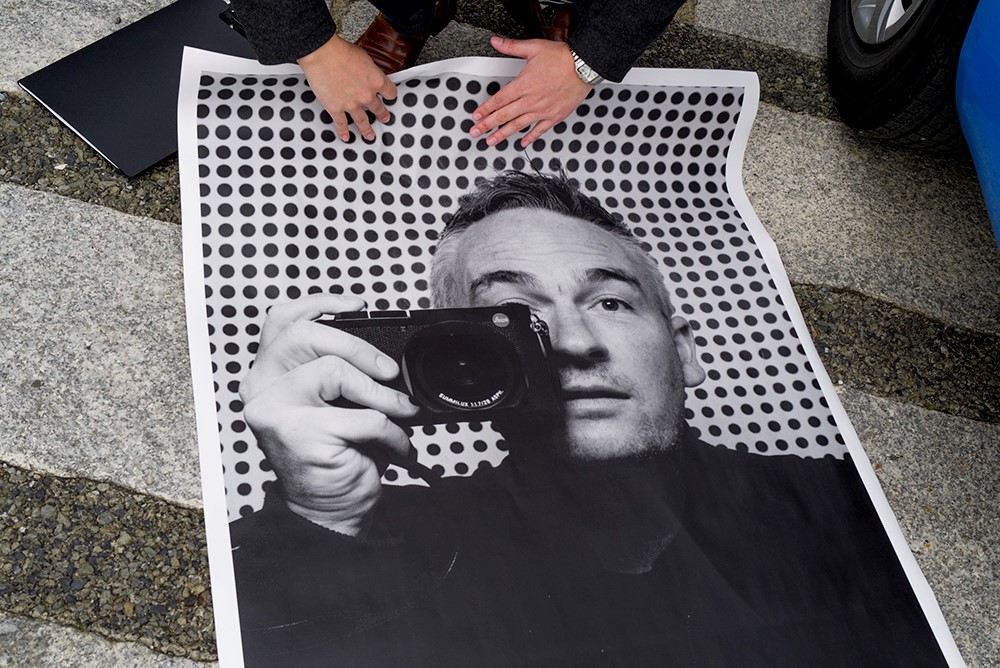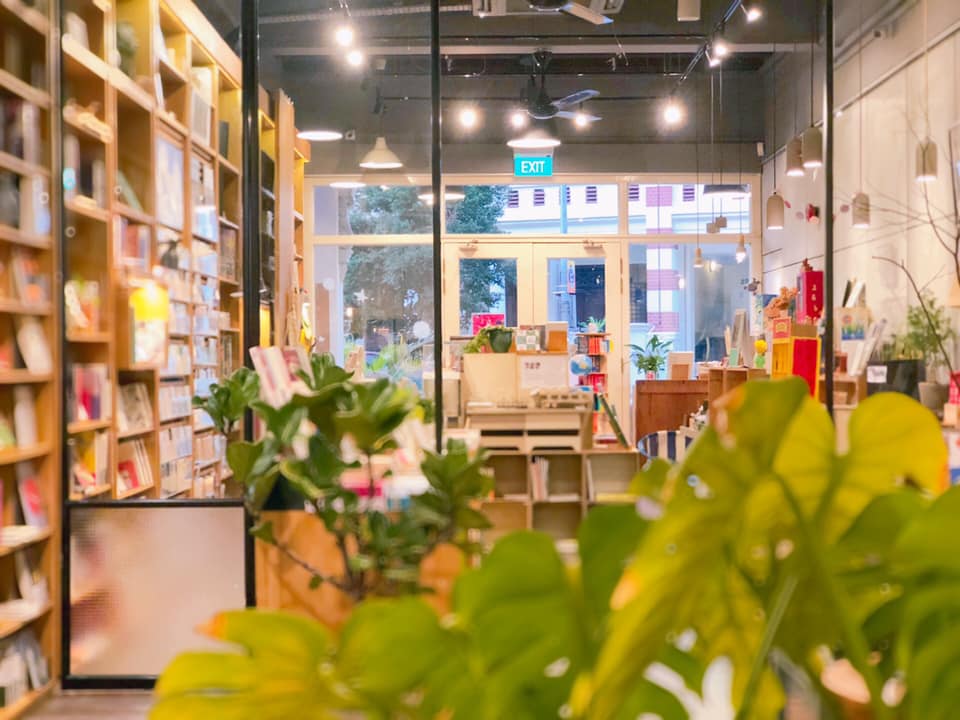It took Hollywood actress Lucy Liu a good many years before she finally dared to exhibit art under her own name. The 51-year-old star best known for her roles in Charlie’s Angels and Kill Bill has been keenly making art since she was 16, but started presenting under a pseudonym (Yu Ling, her Chinese name) after she started acting. It wasn’t just to escape media attention, but to allow visitors to view her art unbiased.
“I had this class in college on Taoism, and they had this section on the un-naming of names—this idea that you don’t label something,” said Liu, at a press conference yesterday (Jan 10) at the National Museum of Singapore. “You remove all previously conceived ideas, so you have a very open palette, an open mind; and that was what I was trying to achieve by using my Chinese name.”
It was only later in 2011 when she was about to publish a book of abstract paintings, Seventy Two, that she decided to come clean about her identity. “It was a very difficult decision, because I didn’t want to take away that mask of who the artist was,” she said.
“It’s harder sometimes when you’re already an actor, to come out with another label, another title, another hat—even though I had been doing art way before I started acting.”
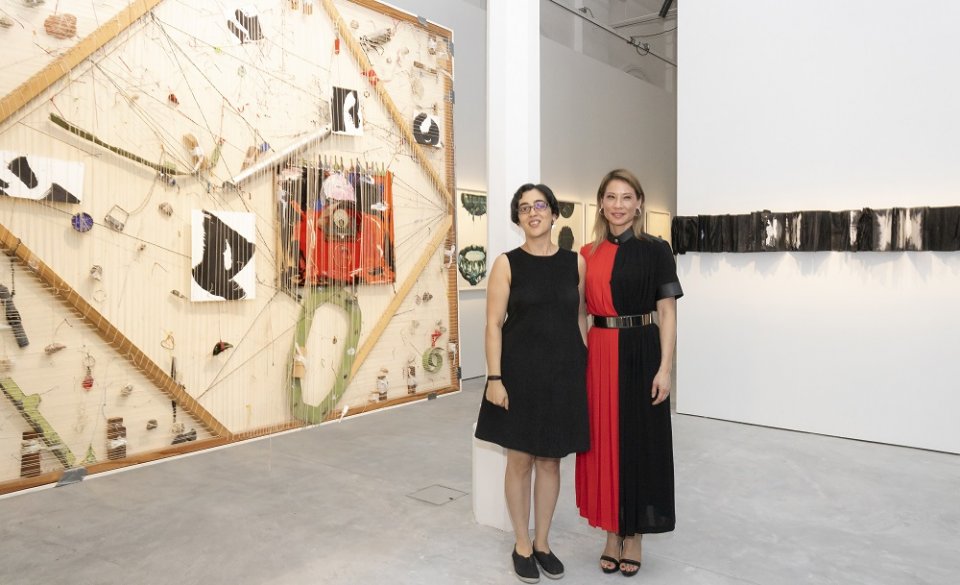
Rao and Liu at Unholmed Belongings
Now, Liu’s third hat is on display here for all to see, in a new exhibition presented by The Ryan Foundation and the National Museum of Singapore. Unhomed Belongings is the result of an artistic partnership between Liu and Singapore’s own Shubigi Rao, an artist and writer who recently won the Asia Pacific Breweries (APB) Foundation Signature Art Prize Jurors’ Choice Award. Both artists, who had never met before, corresponded over a period of time—Liu from her studio in New York; Rao from Singapore—revisiting past artworks and curating them in a collaborative artistic dialogue.
While no new works were actually created for the exhibition, which runs from Jan 12-Feb 24 as part of Singapore Art Week, the show does highlight the parallels between both artists’ works. Both use ink prominently in their paintings, both explore themes of the self, loss, and finding a sense of belonging; and through their art, both convey a sense of cultural displacement in the respective environments they were brought up in. (Rao grew up in an anglicised home in New Delhi, while Liu was born to immigrant Chinese parents in Queens, New York.)
Coincidentally, both artists also have, as their exhibition centrepieces, works revolving around books. Liu’s Lost and Found is an interactive installation of 200 hand-sleeved books containing random discarded objects. An ongoing project, the series had Liu picking up things off the streets since 2012; from crushed soda cans to bread clips, she affixed the debris inside the blank pages she cut herself. Visitors are free to pick up the books, open them, and replace them anywhere within the installation—creating a cycle of rediscovery and new narratives for the lost objects each time.
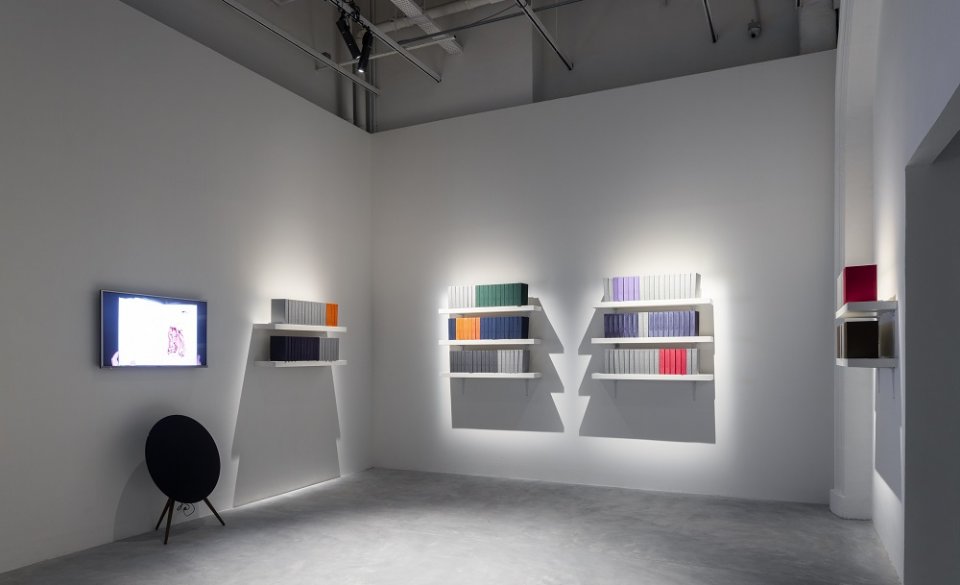
Lost and Found
Liu, who quipped that her fingers were “raw from cutting these pages”, cited her independent childhood in lieu of her parents working full-time, as the inspiration behind the work. “Once I put them in, when I opened the book—there was this discovery of these objects as beings, as living and breathing things. They seemed very pleased and happy to have a place of safety,” she said.
“As a child, I think I wanted that safety, and I wanted that feeling of being in that home; as a safe place to go. Lost and Found is about finding a place, and belonging somewhere, and I’ve always wanted that feeling—of being taken care, of being nurtured; of love.”
Similarly, Rao’s work Pulp: A Short Biography of the Banished Book explores a desire for belonging through books—though in a much more urgent, political way. The 10-year project started in 2014 is only midway through, and when finished will consist of five volumes about book and library destruction, and the book as a medium of resistance. The first two volumes are on show at the exhibition, along with artwork and a truncated film based on Rao’s travels, research and field interviews.
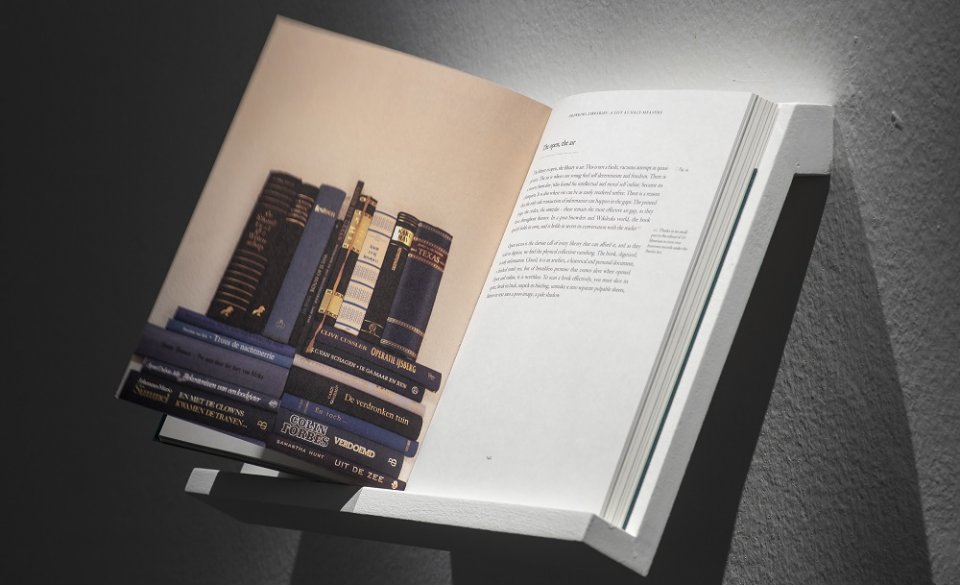
Rao’s Pulp Volume 1 was shortlisted for the Singapore Literature Prize (Enlgish non-fiction) 2016
It too has its roots in some childhood distress. When Rao was nine years old, the library she grew up with in New Delhi was destroyed, searing its impact on her. “It was like my third parent,” she said. “I lost that link with humanity, and it kind of isolated me, and brought to the fore the hatred that people have towards knowledge.”
And while the project is intended as an “attempt to psychoanalyse why our species loves violence”, Rao added that Pulp’s incomplete nature in its 10-year arc earns it its place in the exhibition. “It doesn’t belong anywhere, it’s unhomed,” said Rao, who has been travelling alone for the series.
“I’m showing a very nascent, early part of the project, because these things don’t have a place yet. I don’t quite know how it will all work,” she said.
With a combined total of 15 artworks on show, Unhomed Belongings is a modest exhibition. But its messages speak loud and clear. There’s also Liu’s Velocity to check out, a 2001 mixed media collage made in response to the September 11 attacks; and Rao’s The Wood for the Trees, which features powerful photographic prints from her work on Pulp.
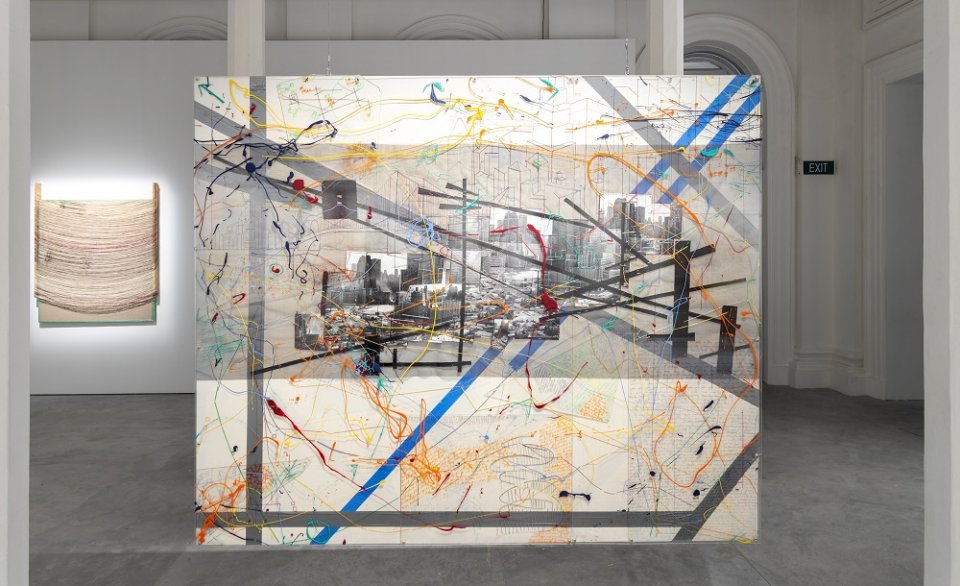
Velocity
It’s a first of sorts, this pen-pal type documentation that successfully fleshed out commonalities from two entirely different worlds. And of course, there’s the unavoidable celebrity aspect that’s a bit of new fun for the national institution. Ryan Su, founder of The Ryan Foundation and who brought Liu onboard, said, “The challenge was if we were to bring a show back to Singapore, and I’m speaking very honestly, with Lucy Liu’s name—would someone take it seriously?”
Preconceived notions put aside, let’s hope you do.
Unhomed Belongings runs from Jan 12-Feb 24 at The Stamford Gallery, National Museum of Singapore. Admission is free and more information is available here.


